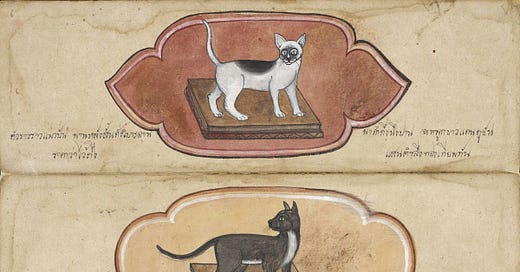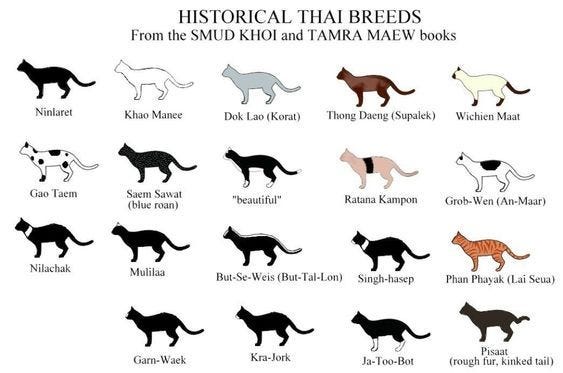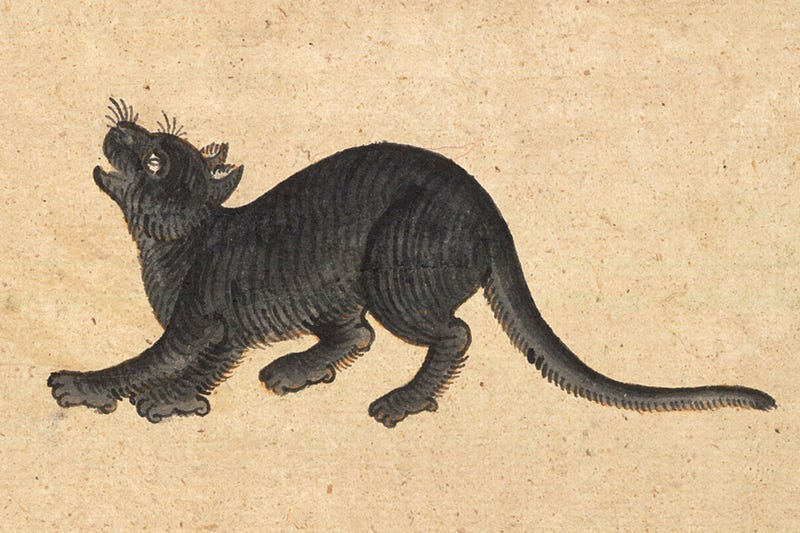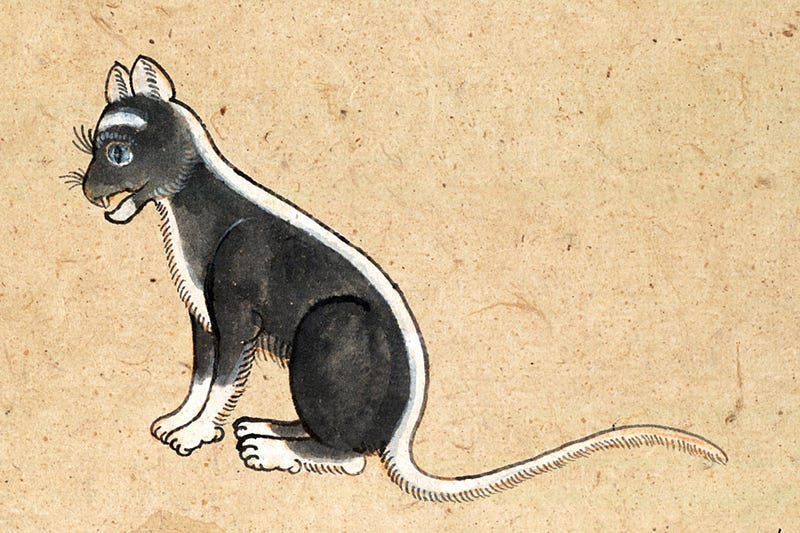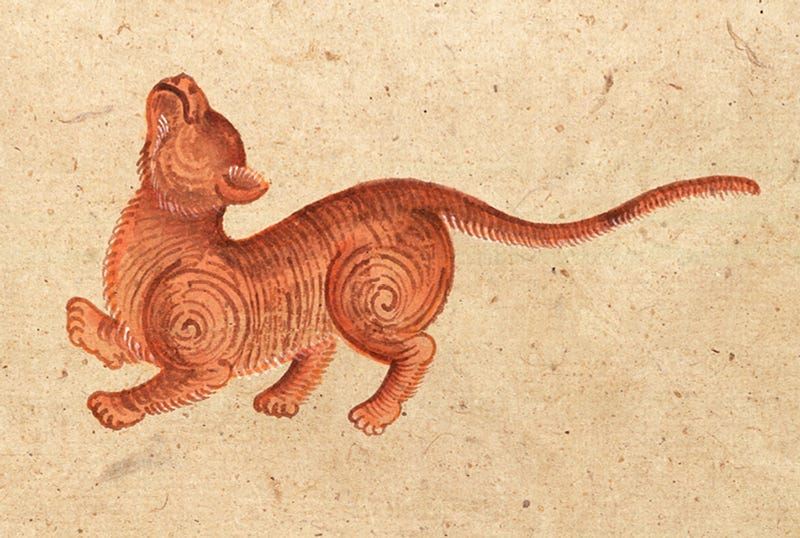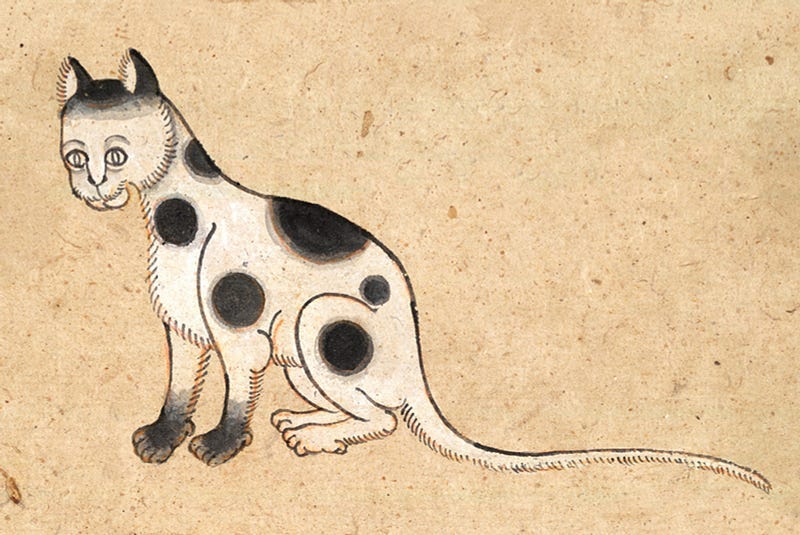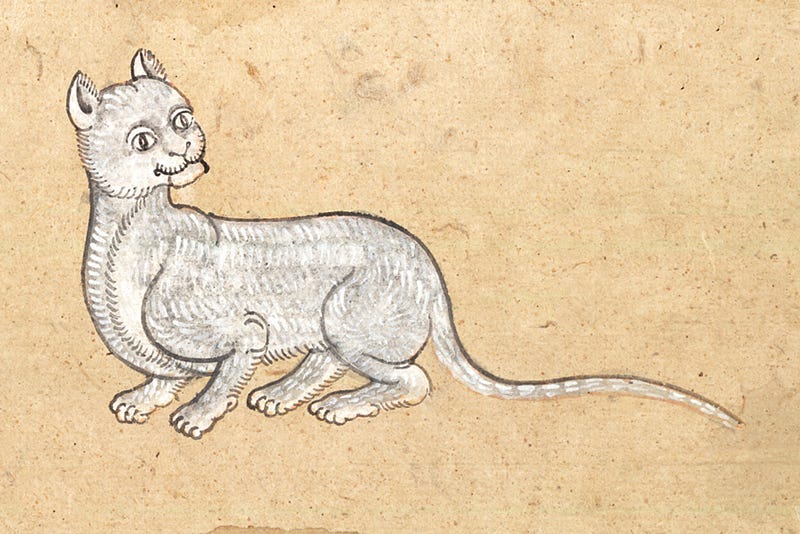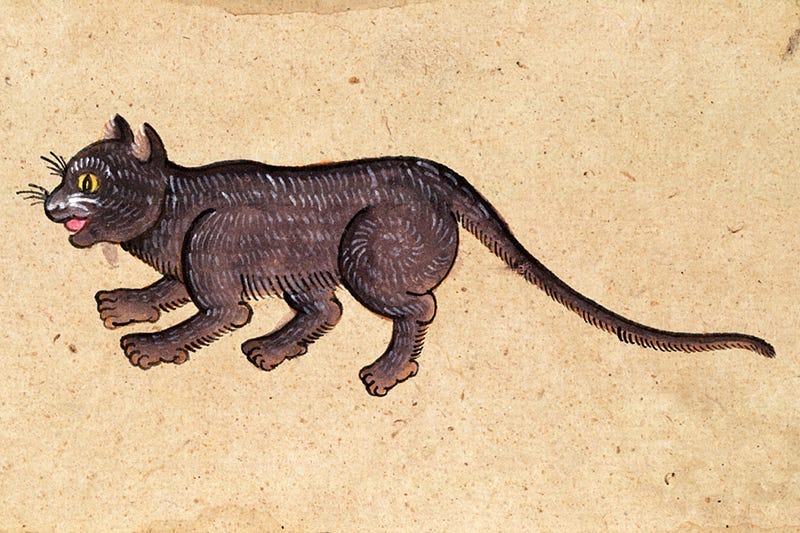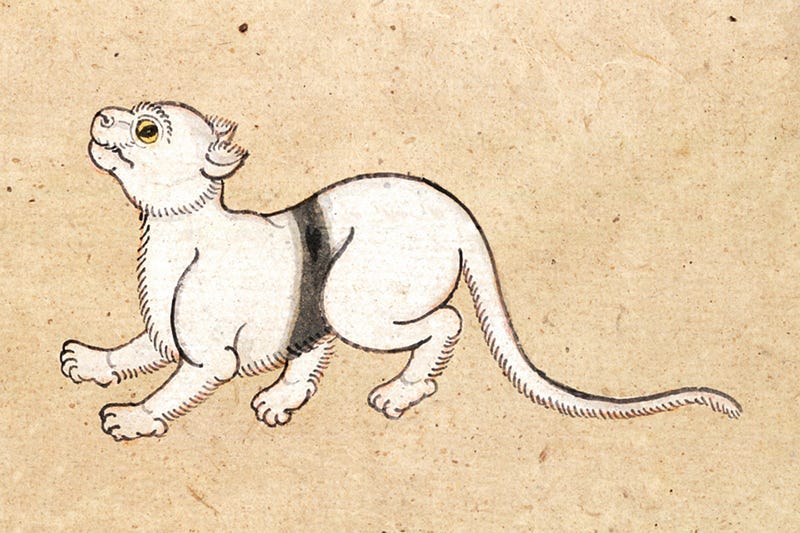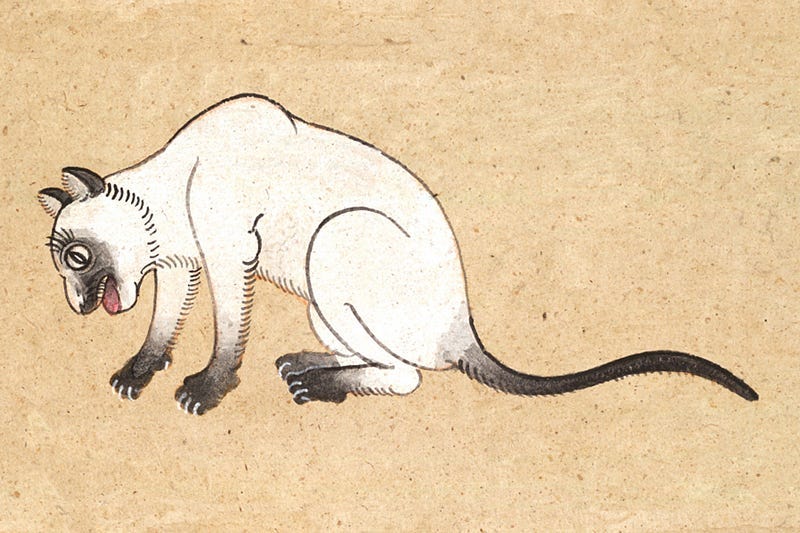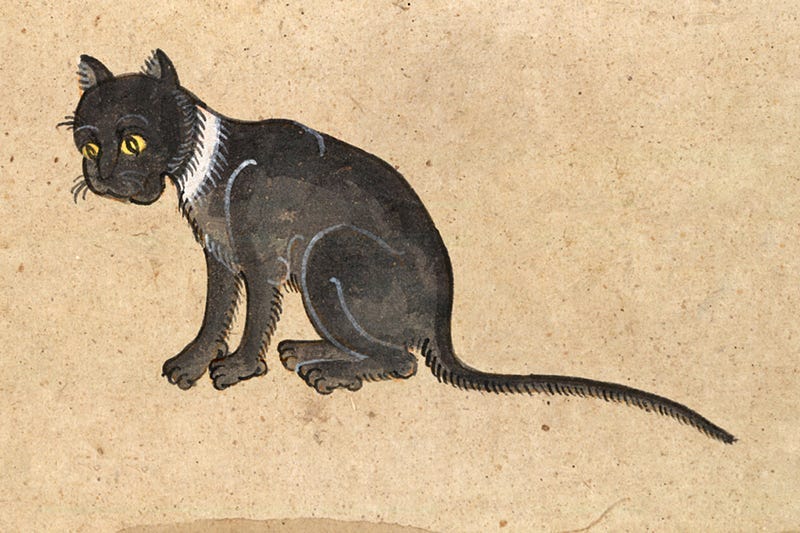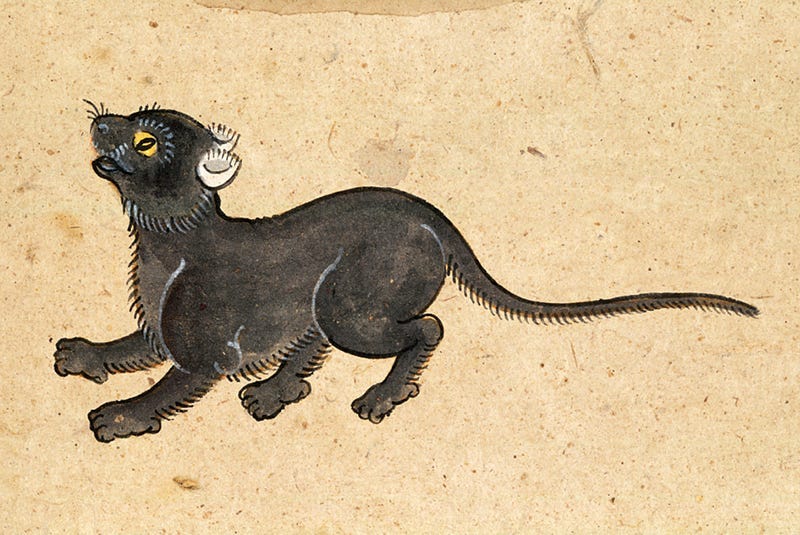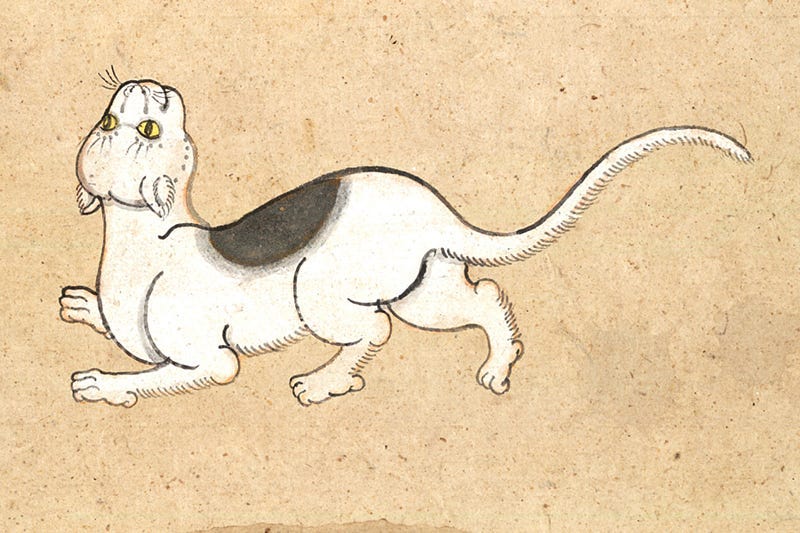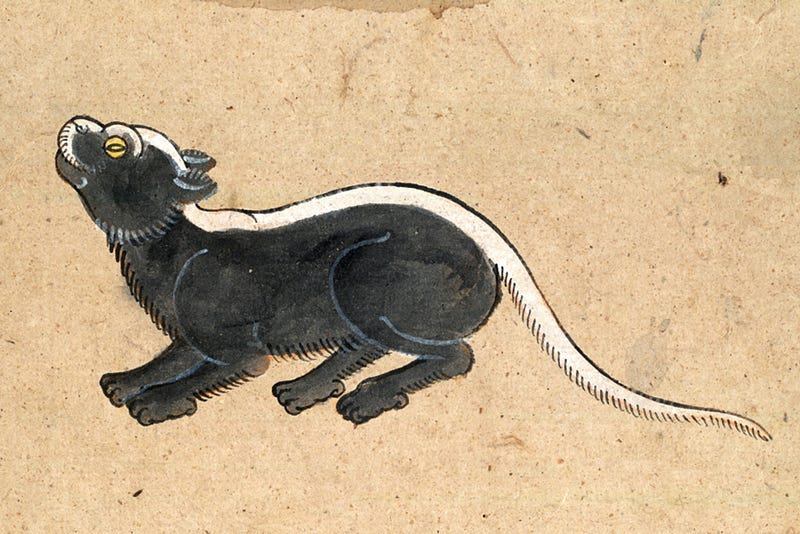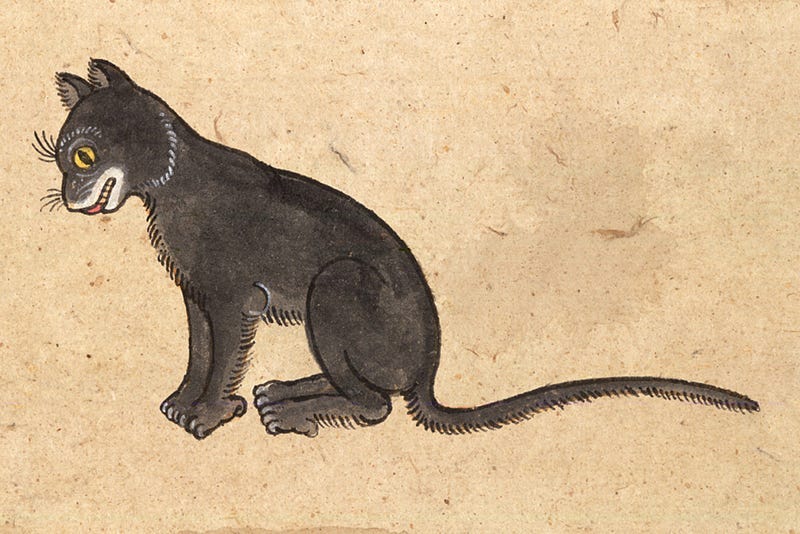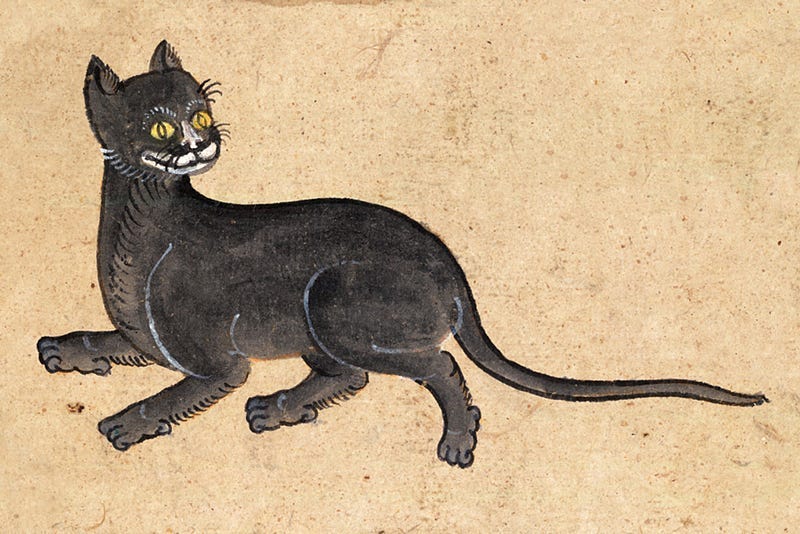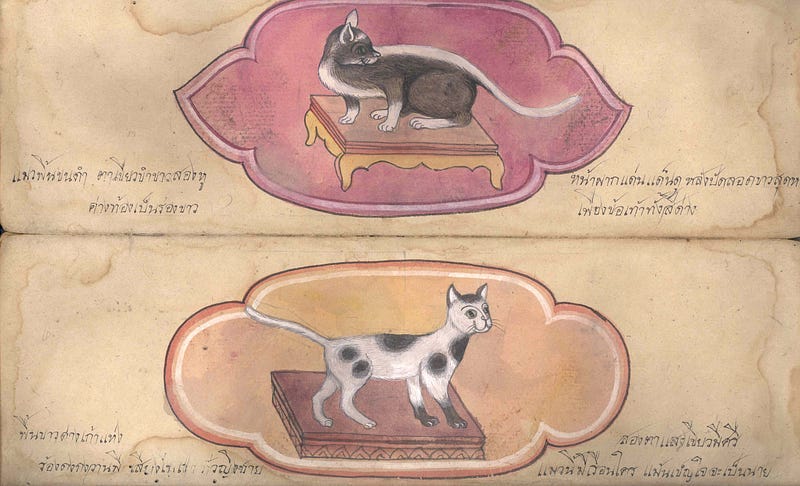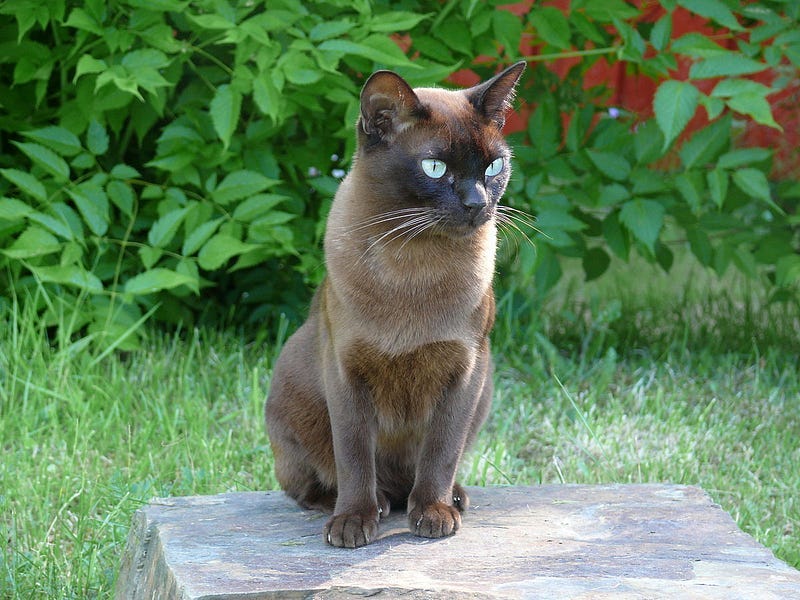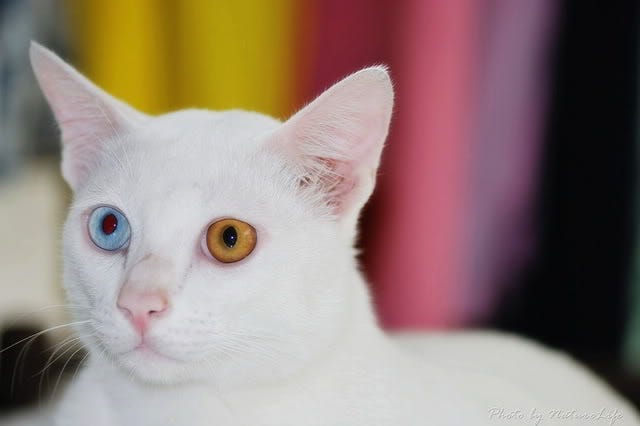The King’s Siamese Breeding Standard dates to 14th century
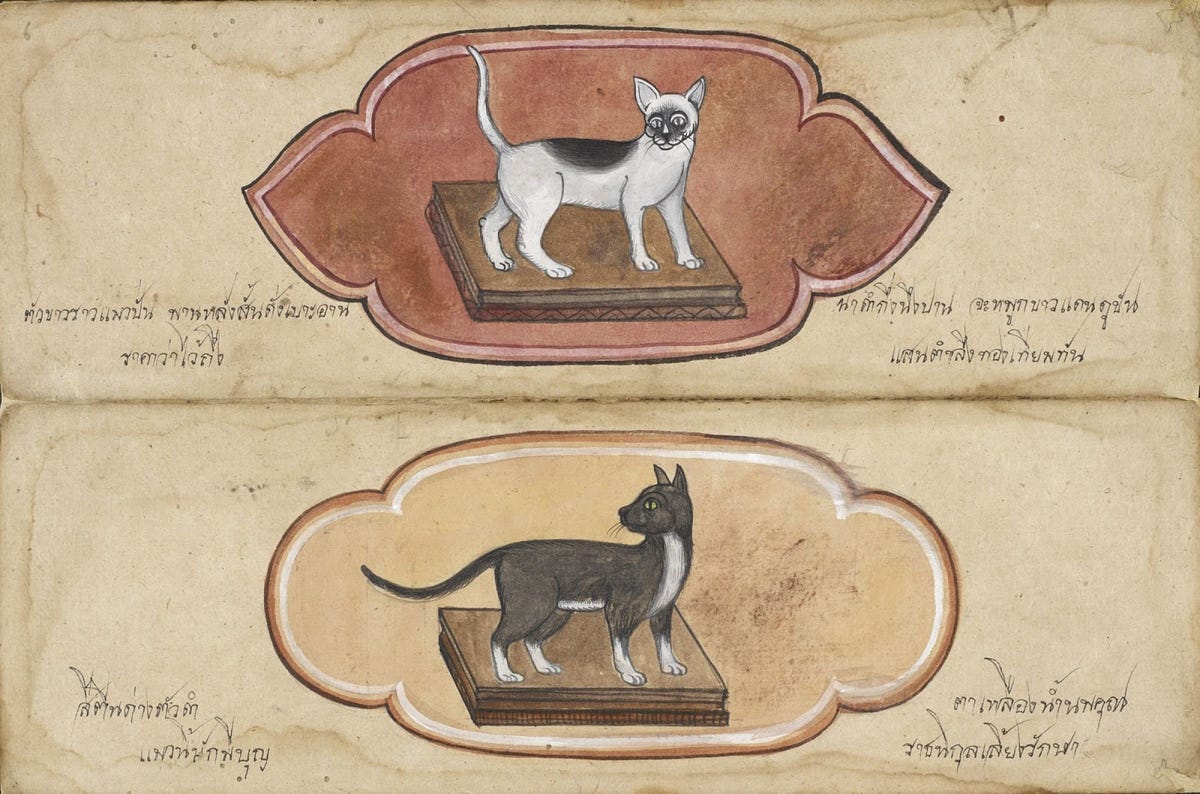
The Cat Fanciers’ Association, est. 1906, now recognizes 42 pedigree of cats, including the oldest on record — the Wichien Maat (Siamese or Pointed cat), as well as the all-white Khao Manee (diamond Eye), which belong to the original or traditional Thai cat breeds as described in the cat poems of the Thai Tamra Maew (tam-ra-my-ew).
The earliest known manuscripts were published in the late eighteenth-century. They are based on superstitions that date to the fourteenth-century, when there may have been over twenty breeds of Thai cats. In other words, the associations of the cats had nothing to do with religion. The treatise likely was a guide to traditional breed standards, which were distinguished as either auspicious or inauspicious, by the king and local monasteries — they brought good luck, protected the temples from evil, and of course — manuscript eating mice, as the monks could not kill the mice. Cats were so revered that killing one was the equivalent of killing a monk. To this day, many Thai vets refuse to put down a cat.
Cats on Film: Her Ladyships’ Many Shades of Grey
a feline vocabulary of aestheticsmedium.com
Cats participate in traditional Thai newborn baby ceremonies, wherein the baby is welcomed into the household. The belief is their presence will help to ensure the baby grows as wise as the cat. The ceremony would be the western equivalent of a christening. Wichien Maat were also present in the coronation ceremonies of new kings in Siam, since the seventeenth-century.
“I have studied many philosophers and many cats. The Wisdom of cats is infinitely superior” — Hippolyte Taine
The modern Siamese cat, with its delicate pointed face, attenuated and delicate bone structure, lithe, lean musculature, and whippy tail, has its direct lineage in the Wichien Maat (วิเชียรมาศ), i.e., the original Siamese cat, though they are very different animals. The face and nose of the Siamese gradually became more slender, a change that was evident in the 1940s, and remains the standard.
The traditional Wichien Maat was a more compact and cobbier cat, supple, with an apple-shaped head and short nose. The American version of this cat was crossbred to feature the “applehead” — that most people in the US associate with Siamese. Though this cat is more loyal to the traditional Siamese, it is not considered desirable for show cats.
Although the other four extant native Thai breeds are not recognized by CFA, other organizations, such as TICA (2007), and FIFe, have begun to classify them as distinct breeds apart from the modern Siamese, and, in 1990, granted them championship status to compete as “Thai cats.”
An excellent digitized hyper-zoomed 19th-century smud khoi copy of the manuscripts, with twelve pages and twenty-three illustrations, is maintained by the British Library, which has made them accessible online, here. There are several editions in circulation, the library’s being just one excellent example.

The Tamra Maew includes the following breeds, of which only Wichien Maat (Siamese) and Khao Manee are recognized by CFA. The smud khoi date from the late nineteenth century.
Inauspicious cats were generally not aggressively bred —many Thais won’t even look at a picture of them. For this reason, that tradition will be respected they are not discussed here. Auspicious breeds of today include Siamese, Korat, Burmese, and Tonkinese.
Below are a number of nineteenth-century Tamra Maew watercolors from a private collection. There are many loose translations of the old abugida Thai script, the Khom (Khmer) script was typically reserved for secular or non-religious subjects. The poetics seem somewhat lost in translation, and I’ve yet to read one that satisfies poetically, nonetheless; they provide general information.
Auspicious Cats of The Tamra Maew
As the name, the breed. Dark Sapphire,
Perfect shiny black form,
Teeth, eyes, claws, tongue, black as the body,
And a tapering tail to the end, running back to touch the head
Round from throat and underbelly, two ears
White to the tail — a cotton flower.
All four paws white, two green eyes,
The name Beauty for its body’s black field
Of appearance superb, a graceful feline.
Color of copper glinting,
Eyes lit like shining rays
Against all evil, malevolence turns to content
Alternating circles on neck, head, and hind thighs,
Plus on both shoulders and front paws,
Black covering the ends of both paws.
Nine horse-like black spots on an all-white background
Grace of the flower, its body evenly colored,
Fur like the lao flower, smooth.
Fur roots a cloudy gray, off-white
Eyes, like dewdrops on a lotus
Black fur alternates with white in all parts.
Fur light and scant on the body,
The shape orderly, slender, and beautiful.
Eyes lit like fireflies, applied liquid gold
So called for the body colored as a conch shell,
Thus the name Jeweled Cloth was bestowed.
A dividing band from chest to back,
Golden eyes brim with water like soft light
Upper mouth, tail, four paws, and two ears,
Eight points of pure black, as stated.
Eye color shines bronze-gray,
The name Moon Diamond for the white fur
The name Sapphire Circle bespeaks grace.
Body to crows’ wings truly compares,
White around the neck, and
can live in any country; this cat one should look after
Mulila is one with its name,
Two ears white, as if embroidered.
Eyes like blooming flowers, like the yellow chrysanthemum.
To the tail-tip all black — feet, body, and head
Spectacle Frame is the name. White as cliffs,
Black fur around the eyes, as if dyed.
On the back, like a horse’s saddle,
A beautiful inky circle. Found in any country
The white line goes from the nose,
white, all along to the tail, a rarity.
Mixed, alternating to the eye. A short body,
Eyes like golden sands of yellow topaz
With the name Sparrow, a nice round frame.
Black body, the shaded background.
White fur, like clouds, floats around the mouth.
Eyes a mix of fresh colors, like gamboge pigment
The Lion is a black-bodied breed.
White around the mouth, around
The neck’s conch-shell mane, and on nose tip.
Gamboge eyes, drops of water fading in light
Only five of the traditional breeds are still extant, and all of them in a breeding program, Baan Maew Thai, in Samut Songkhram, begun in 2001, by Preecha Pookabut.
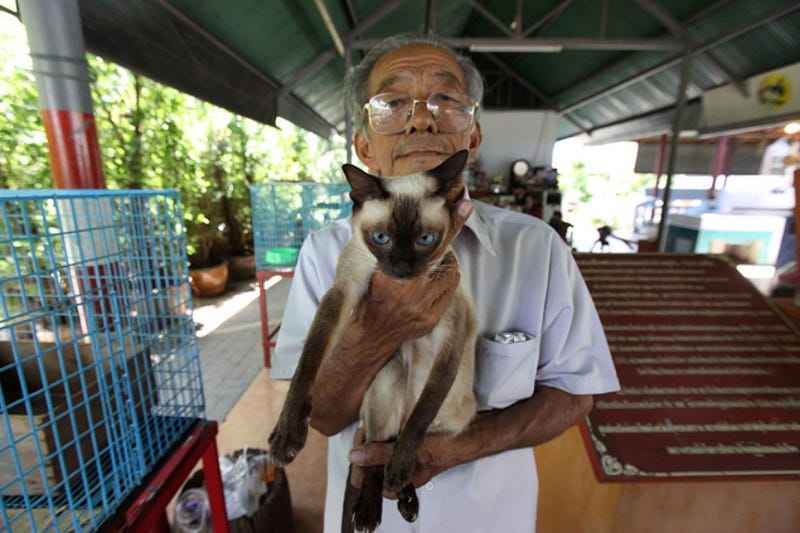
Preecha dreams to resurrect the other eighteen or so breeds thought to be extinct. Below, are the four breeds he maintains.
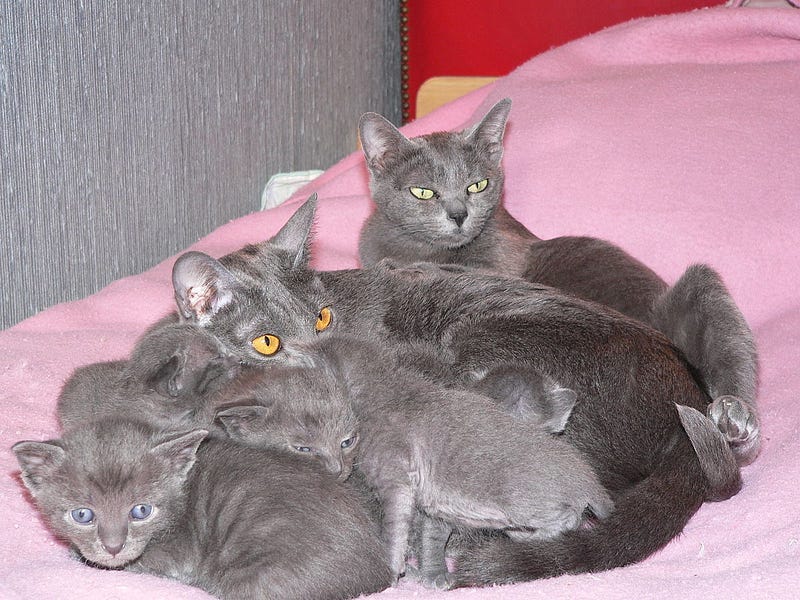
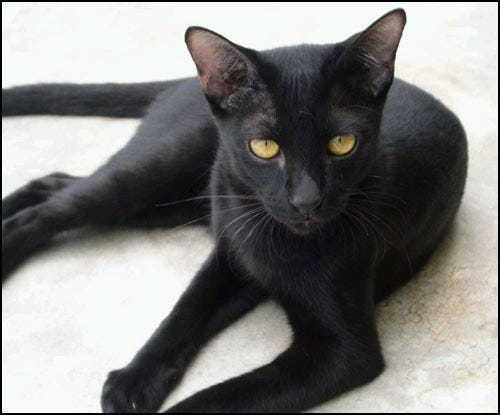
(above five photos source)
Famous Wichien Maat
images Dynastysiam.com
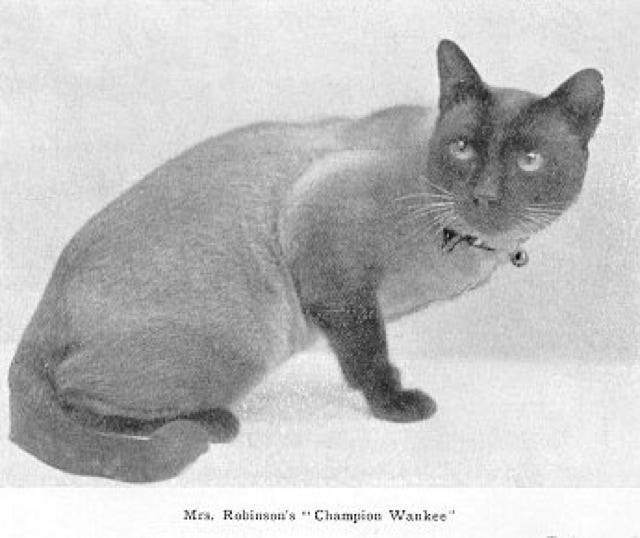
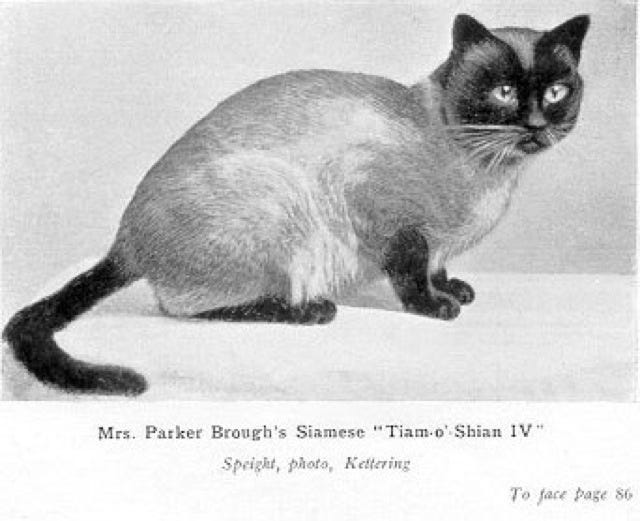
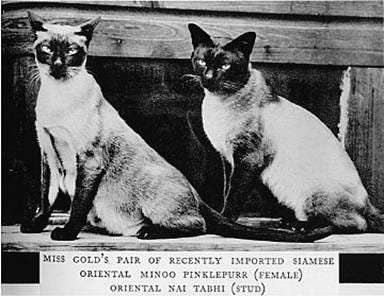
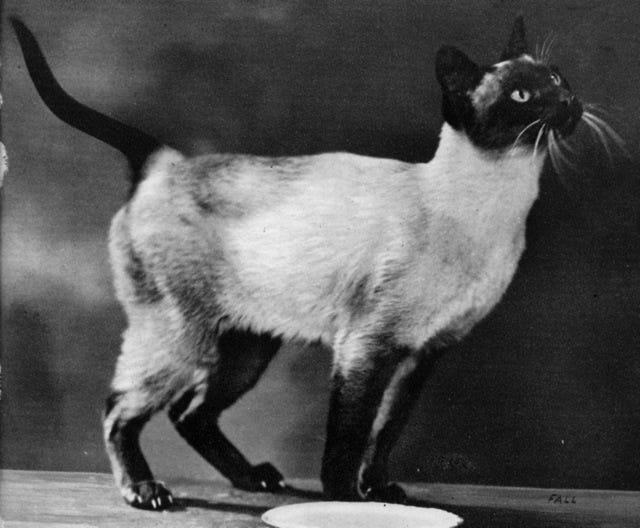
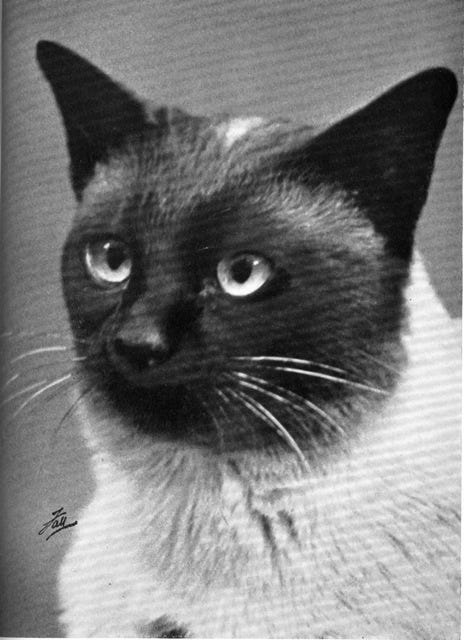
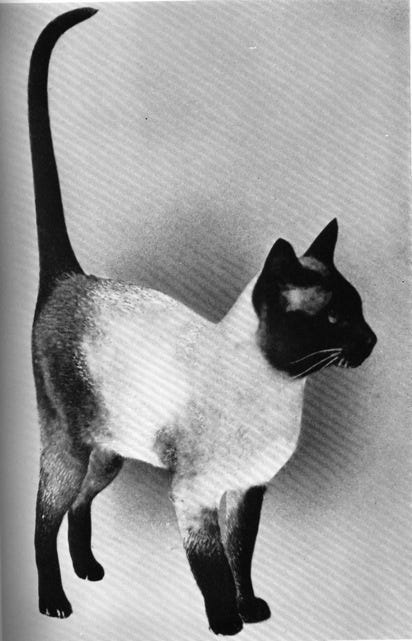
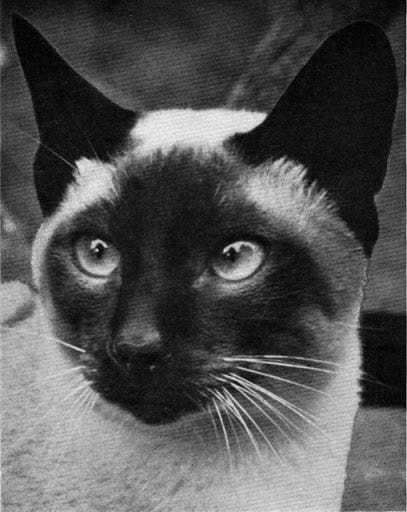
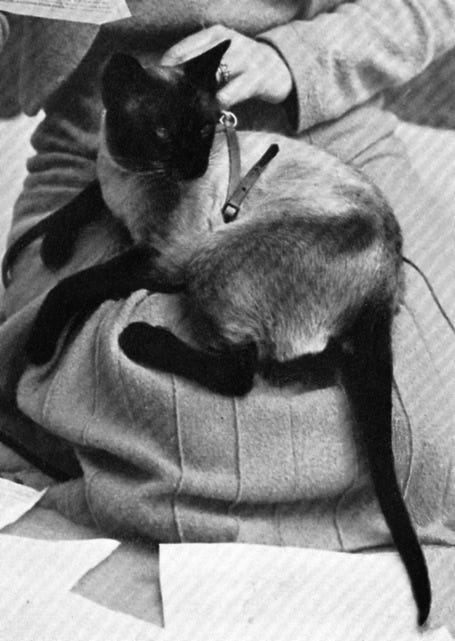
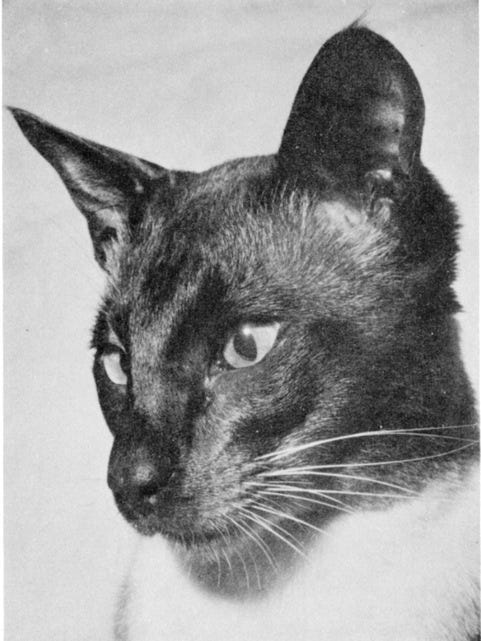
“The Killdown prefix is very famous. It belongs to Mrs Isobel Keene, a well known and respected judge who bred for many years. Mrs Keene bred beautiful Ch. Killdown Kerry (1959), the grandson of two very notable studs Ch. Clonlost Yo-Yo and Lindale Simon Pie, and a great-grandson of famous Mystic Dreamer (source)
Bibliography
Clutterbuck, Martin R., “Inventory: Auspicious Cats” Cabinet (30) (2008)
Clutterbuck, Martin R., The Legend of Siamese cats, White Lotus Press, Bangkok, (2004)
Igunma, Jana, A Treatise on Siamese Cats, British Library, Southeast Asia Library Group (June 2013)
Introduction to Cat Portraiture
I: Classical Representationsmedium.com

